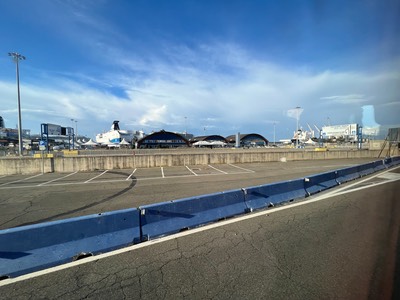
Civitavecchia is a major port that serves Rome and other surrounding towns. It was built by the Roman emperor Trajan as a military and commercial port. Today, 2.5 million tourists pass through the port yearly. The population of the town is 55,000. The area surrounding Civitavecchia is largely agricultural. The soil is very fertile because of volcanic activity centuries ago.
Our excursion took us to see some Etruscan tombs. Etruscans ruled a large part of Italy. The first mention of them n history was about 900 BCE. Their influence gradually decreased until in about 500 BCE the balance of power had shifted to Rome. The kings funded public works like draining marshes and building city walls.
The tombs are near where we visited necropolis (city of the dead). Note that they were not a cemetery. That is a Christian word. The tombs were built in around 500 BCE. The tombs are the largest underground art gallery in the Mediterranean. The tombs were discovered on a farm in the late 1800s. The area is now a UNESCO world heritage site.
There are 6,500 tombs. Only 30 of them were decorated with frescos. The are on the frescos depicted the profession of the dead person or his status. These tombs were for the wealthy. The frescos were well preserved because they became buried over the years resulting in no ventilation. Now the tombs are kept at high humidity and unheated. Here are some pictures of the frescos.
Each tomb had 20+ steps before you could get to view the tomb through a window (on the left).
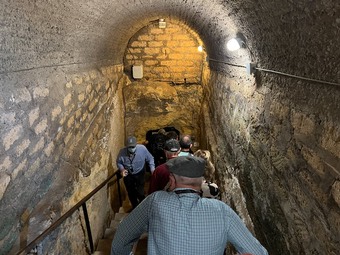
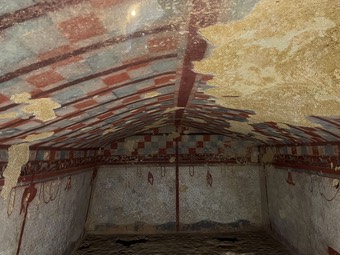
The picture on left is of a very big tomb with two rooms. On the right is a very well preserved tomb. You can see that originally the tombs were beautifully decorated.
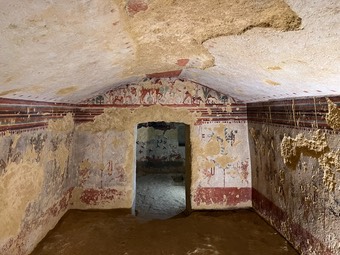

The countryside was very beautiful as you can see below.
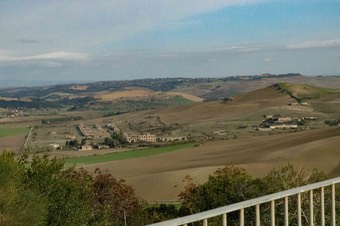
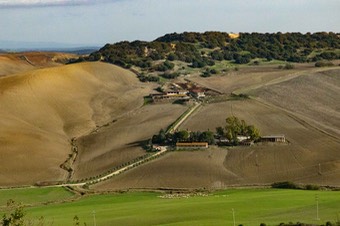
Our last stop was a museum of Estrucan art housed in a building built in the 1700s. It was full of artifacts (some from the tombs). The courtyard of the building is shown in the left picture. Terra cotta pots on right.

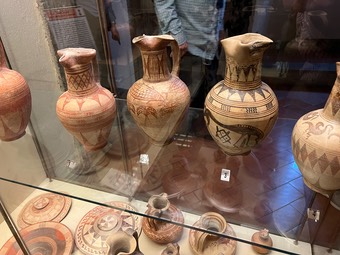
On the left: a decorated ostrich egg shell. On the right: some years ago the Met museum in New York returned dozens of artifacts or Etruscan art to the museum. As an expression of gratitude they loaned this piece to the Met for 5 years.
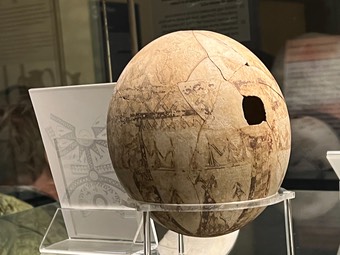
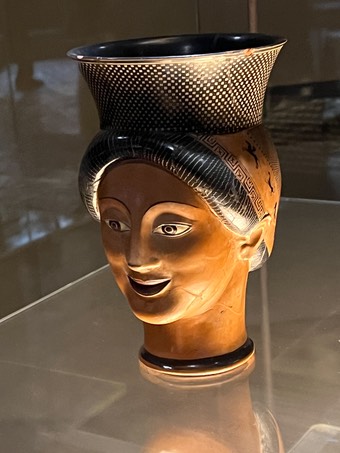
We lucked out. It started drizzling while we were in museum and rained hard later on.
